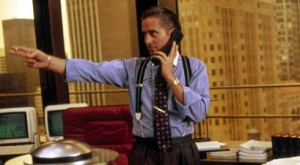Wall Street is something we have all heard of; it has become mythologized over the years, owing to the “Wall Street Crash” and Michael Douglas’ stark portrayal of corrupt trader Gordon Gecko in Oliver Stones’ ‘Wall Street’.

A lot of peoples’ perception of Wall Street may have been unfairly formed by the information they have received about the Wall Street crash, and by the fictional Gecko, a ruthless Wall Street trader, who came to symbolize greed and avarice – a character many now claim is at odds with the true Wall Street.
Indeed, a lot of mistrust and suspicion aimed at Wall Street and its dealings can be claimed to stem from the Wall Street crash (which was triggered by too much speculation), as well as Stones’ film. More recently, Scorsese’s The Wolf of Wall Street further cemented the idea that Wall Street is a debauched, decadent place built on immoral principles and too much partying!
But people claim these portrayals are dated and at odds with the modern-day Wall Street. In essence, whilst Wall Street is only a very tiny, minuscule cartographic entity, it has become synonymous with the US’ financial markets as a whole.
Indeed, it has come to be seen as the cradle of the financial world. And whilst many people were once making large sums of money there, the financial crises of 2008 prompted a change, not just in the lifestyle of the area, but also in the amount of jobs available, as well as the pay. Indeed, pay levels are only now beginning to get near what they were pre-2008.
Wall Street is not just a street; it is an area located on the southern tip of Manhattan, which includes the New York Stock Exchange, as well as Battery Park. Indeed, home to the New York Stock Exchange, Wall Street and New York City itself have come to be recognized as the financial centers of the world.
The area is marked by high-rise buildings that for many have come to symbolize the success of capitalism, as well as the extreme wealth generated by the area. The famous buildings in Wall Street include Federal Hall, the Trump Building, and the Deutsch Bank Building, which was formerly the J.P Morgan building.
The plethora of skyscrapers has served to mark Wall Street as something of an aesthetic collective monolith. The extravagance of the buildings has come to symbolize the exorbitant wealth that is created there.
An estimation from 2008 put the figure of the total number of people employed in Wall Street at close to 200,000, with claims now suggesting that that number was down in 2013. These employees include investment bankers, traders, brokers and analysts. Analysts often draw the short straws, working extremely long hours with little time for vacation.
Whilst many outsiders may believe that Wall Street traders are constantly partying, blowing all their money on champagne and caviar, the reality is that a lot of Wall Street employees work such long hours that many of them simply want to sleep when work is done. Wall Street is still attractive to many young analysts, however, with 46% of Princeton graduates going to work in the financial services sector – with many of them heading to Wall Street.
Although there was once the claim that Wall Street’s traders and brokers led a monopoly that allowed them to demolish the smaller firms, leading to accusations of insatiable greed and corruption, a view of vice exacerbated by Michael Douglas’ portrayal of Gordon Gecko, this argument has now dimmed, with brokerages existing all over the US, and with Wall Street’s traders failing to retain the exclusivity over information and data that they once enjoyed.
This isn’t to say that the infamous Wall Street ethos of making money for money’s sake has dimmed; on the contrary, Wall Street’s original values are still in full flow. Wall Street, in essence, deals with making money.
The Wall Street Code: a thriller about a genius algorithm builder who dared to stand up against Wall Street. Haim Bodek, aka The Algo Arms Dealer.
From the makers of the much-praised Quants: the Alchemists of Wall Street and Money & Speed: Inside the Black Box. Now the long-awaited final episode of a trilogy in search of the winners and losers of the tech revolution on Wall Street. Could mankind lose control of this increasingly complex system?
Director: Marije Meerman
Research: Gerko Wessel